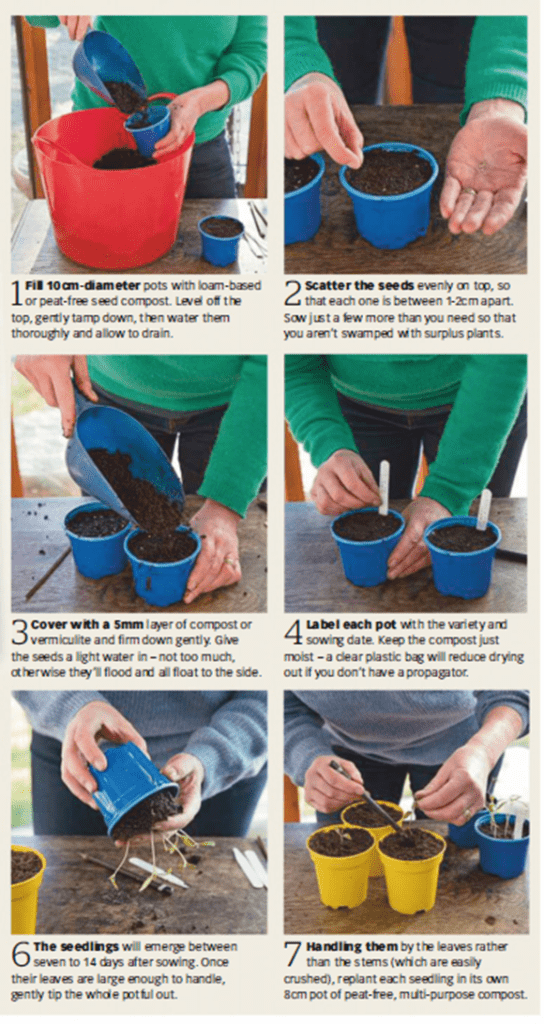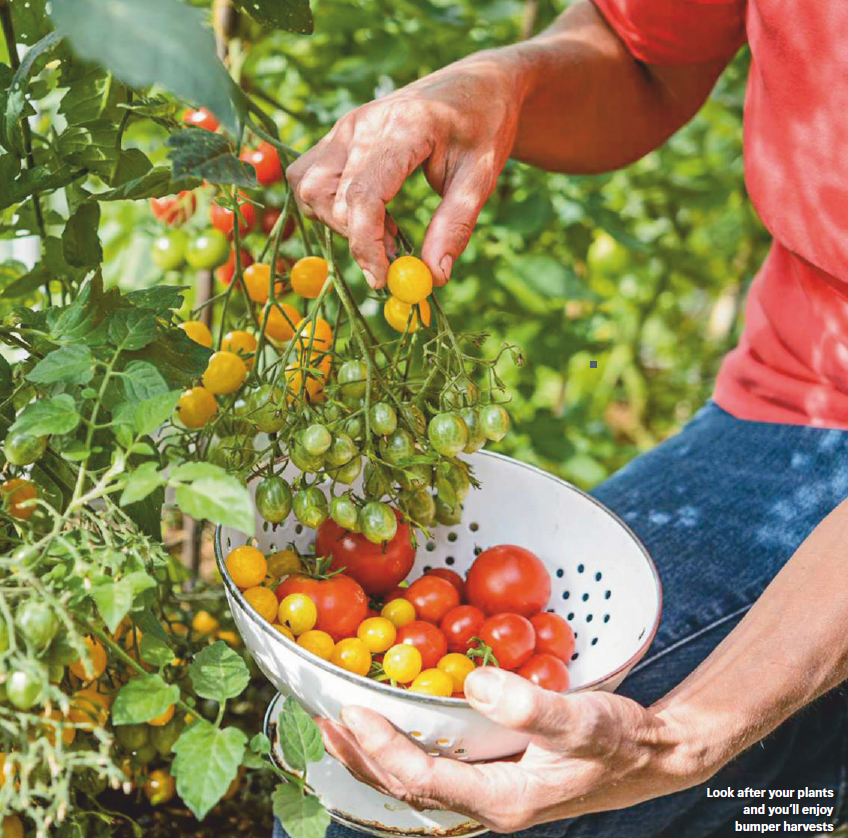Tomato Growing Tips
No plot is complete without this summer staple. Here we explain everything you
need to know to ensure delicious, bumper harvests and how to avoid common pitfalls
You’re more likely to find tomatoes in gardens than any other vegetable, with over 60 percent of us growing them, making them more popular than potatoes, strawberries, and salads.
It’s easy to see why: tomatoes are inexpensive to raise from seed, and as climate change sends summer temperatures skyrocketing, they ripen properly here, too.
Once you’ve enjoyed the burst of flavor from just-picked, home-grown tomato, still warm from the sun, it spoils your experience of shop-bought ones forever.
Tomato Growing Tips will help. Newcomers to growing your own food will be familiar with round red salad varieties, but you don’t have to stop there.
Juicy heirloom beefsteaks, meaty Italian plums, and sweet little cherry toms to pop in your kids’ lunchboxes are all available in seed catalogs. Plant shapes are changing, too.
There are hanging basket tumbling’ types, compact ‘patio’ varieties for containers, and multi-stemmed bush tomatoes, alongside conventional glasshouse ‘cordon’ varieties.
Training is simple with Tomato Growing Tips: many are grown as a single stem so that you can pack plenty of varieties into a small space.
But let’s also look at alternatives because, as well as conventional single-stemmed cordons, I’ve put three other methods through their paces.
Tomato planting guide

Greenhouse toms
If your tomatoes are destined to crop in a greenhouse, plant them into containers, growing bags, or the greenhouse border as soon as the first tiny flower trusses form. Choose a large pot, at least 30 cm wide and deep for standardized varieties, and fill with peat-free compost.
Baskets, bags, and containers
Hanging basket varieties should be planted into large baskets – small ones will dry out too quickly, especially in the height of summer once temperatures soar and root systems become extensive.
Planter-style growing bags will provide the extra compost volume needed to avoid drought-stressed plants – these bags are also ideal for patio growing.
Planting outside
Outdoor crops need hardening off: once night-time temperatures are reliably in double figures (this generally occurs in early June), move plants outside for the day, then bring them back indoors at night, for a week, before planting outside permanently.
Secrets of success
Give tomatoes the warmest, sunniest, and most sheltered spot –ideally, positioning them inside a greenhouse or a polytunnel.
If growing plants outside, choose early fruiting types like ‘Shirley’ and bush varieties such as Red Alert,’ which produce fruit sooner.
Automatic irrigation will keep your soil consistently damp—link leaky hoses via a timer to an outside tap or a water-butt pump.
Add liquid seaweed fortnightly while plants are growing. When the fruits form, switch to a potassium-rich tomato feed to boost trusses.
Cut back on watering from late summer to intensify flavors. Water just as often, but with half quantities to avoid diluting the all-important sugars.
Tomato training
Four ways to train: these methods help boost water and nutrient uptake, but which was best?
Single cordons
Best for Larger fruits. Method The conventional growing technique: tie each tomato plant to a single, sturdy cane, pinching out any side shoots that form to leave one central stem.
Results While single cordons produced fewer fruits than the other methods, individual tomatoes were more extensive – but plants struggled in drought.
Double cordons
Best for High yields. Method Sink canes either side of the plant. Tie the main stem to one, then train the first side to shoot onto the second cane. Remove other side shoots that appear.
Results We had bumper harvests,
with almost twice as many tomatoes, though individual fruits were smaller. The plants also suffered in the hot, dry summer.
Earthing up
Best for Strong growth. Method Once plants are 40 cm high, strip off their lower leaves and wrap cardboard around the stem to make a collar. Wrap string around this cylinder to make it secure, then fill it almost to the top
with compost.
Results By June, these were the most significant plants in the greenhouse. They weren’t bothered by drought and produced the first fruits.
Burying seedlings
Best for Drought resistance. Method Remove the lower leaves, then lay young plants sideways in a 15 cm-deep trench. Backfill with soil to bury the stem, then gently bend the tip upright and tie it to a sturdy cane.
Results This method produced extra roots, resulting in noticeably greener foliage and an extended cropping season. Plants coped better in high temperatures,
Tomato troubleshooter
Despite all best intentions, disaster can sometimes strike – here’s how to tackle problems.
Blight marks the fruits and makes them unpalatable. It’s worse in damp weather, so grow in a greenhouse to keep leaves dry and avoid splashing the foliage.
Outside, grow blight-resistant varieties like ‘Mountain Magic.’
Whitefly sap suck and weaken your plants – grow French marigolds nearby to deter them.
Alternatively, you can release the biological control Encarsia. Formosa (a parasitic wasp) in early summer.
Blossom end rot is a calcium deficiency, causing brown, corky fruit bases. It’s caused by uneven watering. Never let tomatoes dry out and keep the soil damp throughout the season.
Fruit splitting is a result of fluctuating water levels. If you flood plants, their fruits will burst, incredibly thin-skinned varieties like ‘Sungold.’ With summer downpours, it is hard to avoid this with outdoor tomatoes.
Verticillium wilt is a nasty fungal disease that causes plants to droop and die suddenly in midsummer. It lives in the soil, and there’s no cure – so if your soil’s infected, grow resistant varieties like ‘Fandango’ or grow plants in containers or growing bags.
























Comments are closed.